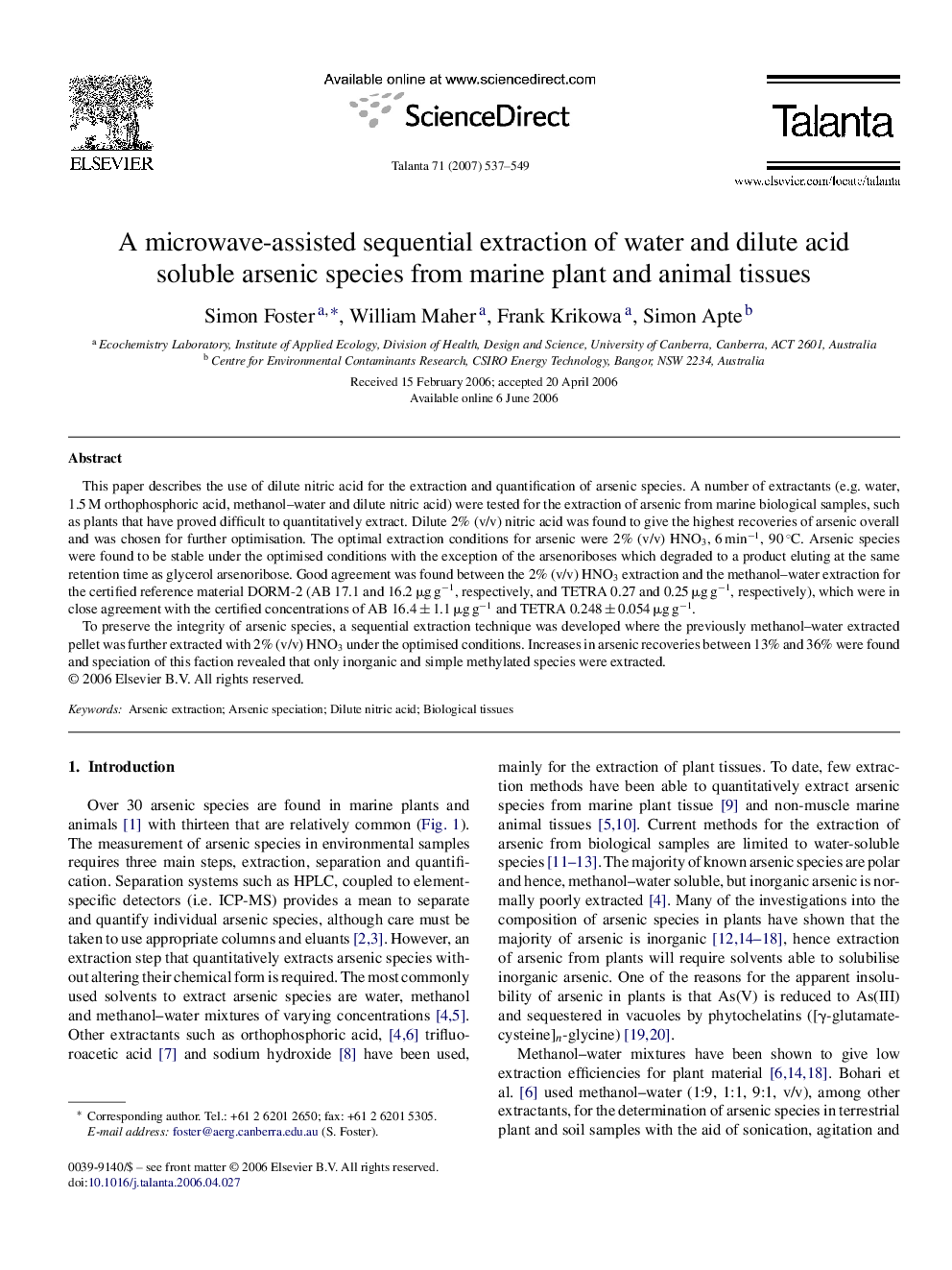| Article ID | Journal | Published Year | Pages | File Type |
|---|---|---|---|---|
| 1244217 | Talanta | 2007 | 13 Pages |
This paper describes the use of dilute nitric acid for the extraction and quantification of arsenic species. A number of extractants (e.g. water, 1.5 M orthophosphoric acid, methanol–water and dilute nitric acid) were tested for the extraction of arsenic from marine biological samples, such as plants that have proved difficult to quantitatively extract. Dilute 2% (v/v) nitric acid was found to give the highest recoveries of arsenic overall and was chosen for further optimisation. The optimal extraction conditions for arsenic were 2% (v/v) HNO3, 6 min−1, 90 °C. Arsenic species were found to be stable under the optimised conditions with the exception of the arsenoriboses which degraded to a product eluting at the same retention time as glycerol arsenoribose. Good agreement was found between the 2% (v/v) HNO3 extraction and the methanol–water extraction for the certified reference material DORM-2 (AB 17.1 and 16.2 μg g−1, respectively, and TETRA 0.27 and 0.25 μg g−1, respectively), which were in close agreement with the certified concentrations of AB 16.4 ± 1.1 μg g−1 and TETRA 0.248 ± 0.054 μg g−1.To preserve the integrity of arsenic species, a sequential extraction technique was developed where the previously methanol–water extracted pellet was further extracted with 2% (v/v) HNO3 under the optimised conditions. Increases in arsenic recoveries between 13% and 36% were found and speciation of this faction revealed that only inorganic and simple methylated species were extracted.
